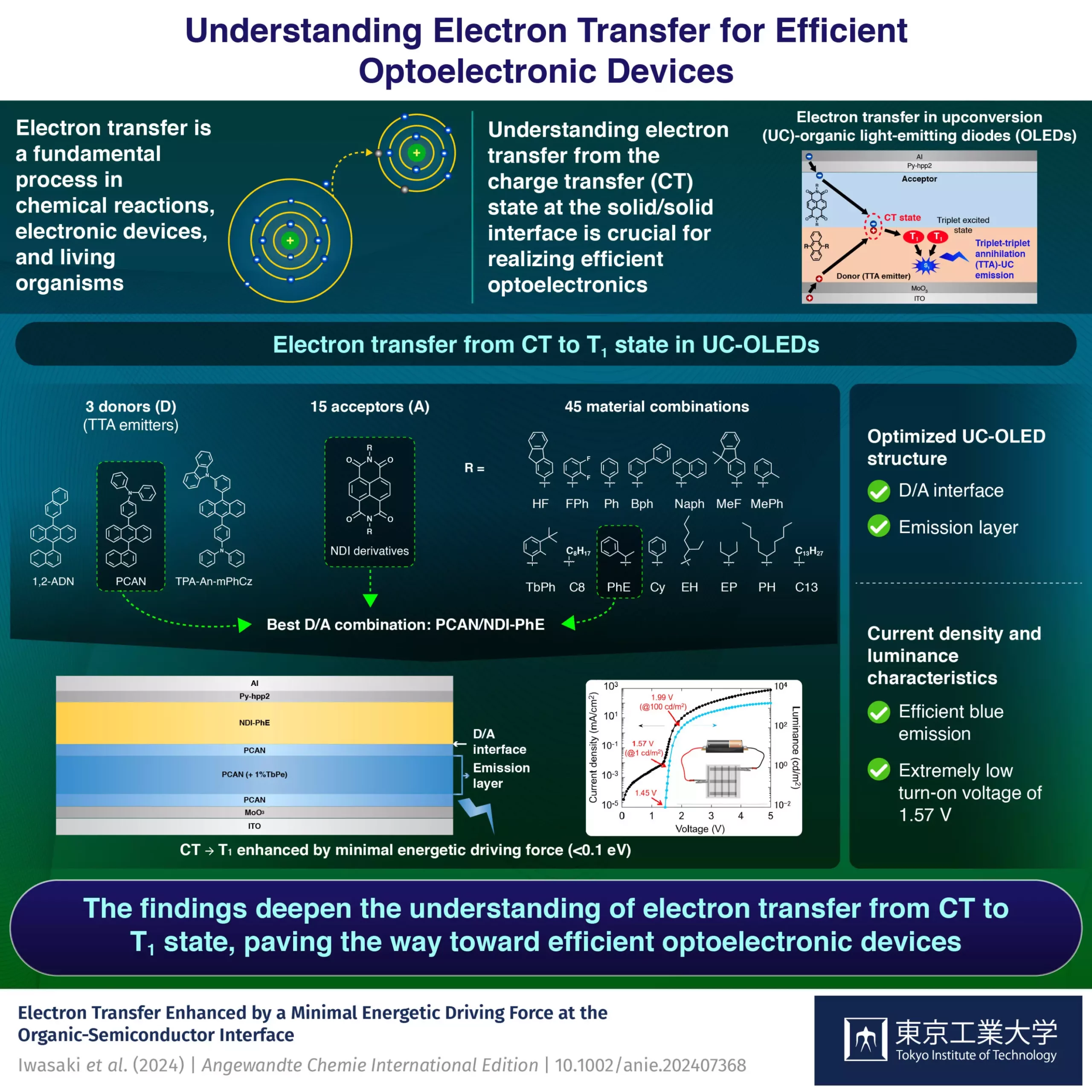Electron transfer plays a crucial role in various processes such as chemical reactions, electronic devices, and living organisms. In the realm of organic optoelectronic devices like OLEDs and organic photovoltaics, understanding electron transfer steps at a solid/solid interface is essential for enhancing device performance and efficiency.
The Importance of Electron Transfer
Electron transfer involves the movement of an electron from a donor molecule to an acceptor molecule, with the charge transfer (CT) state being a key intermediate step in the operation of organic optoelectronic devices. By studying the energetic and structural factors of electron transfer steps, researchers can gain valuable insights into improving the performance of these devices.
The Marcus theory provides a framework for understanding electron transfer based on energetics and structures. By applying this theory, researchers can experimentally investigate electron transfer reactions from the CT state to other excited states, shedding light on the mechanisms underlying these processes.
Triplet-Triplet Annihilation in UC-OLEDs
Recent studies have introduced the concept of upconversion OLEDs (UC-OLEDs) that utilize electron transfer from the CT state to a triplet excited (T1) state through triplet-triplet annihilation (TTA). This mechanism can significantly reduce the turn-on voltage of blue UC-OLEDs, addressing challenges like high driving voltage and low stability.
A team of researchers led by Associate Professor Seiichiro Izawa from Tokyo Institute of Technology investigated electron transfer efficiency from the CT state to the T1 state in 45 UC-OLEDs. Their systematic analysis of different material combinations revealed that electron transfer is enhanced by a minimal driving energetic force, less than 0.1 eV.
Novel Donor-Acceptor Combination
From their analysis, the researchers identified a novel donor-acceptor combination, PCAN/NDI-PhE, which they used to fabricate an efficient blue UC-OLED with an extremely low turn-on voltage of 1.57 V. These findings deepen our understanding of electron transfer mechanisms and pave the way for the development of more efficient UC-OLEDs.
Electron transfer is a fundamental process that is pivotal for the operation and optimization of organic optoelectronic devices. By delving into the mechanisms of electron transfer from the CT state to other excited states, researchers can unlock new possibilities for improving device performance and efficiency. The research conducted by Dr. Izawa and his team exemplifies the importance of understanding electron transfer in advancing the field of organic optoelectronics.


Leave a Reply